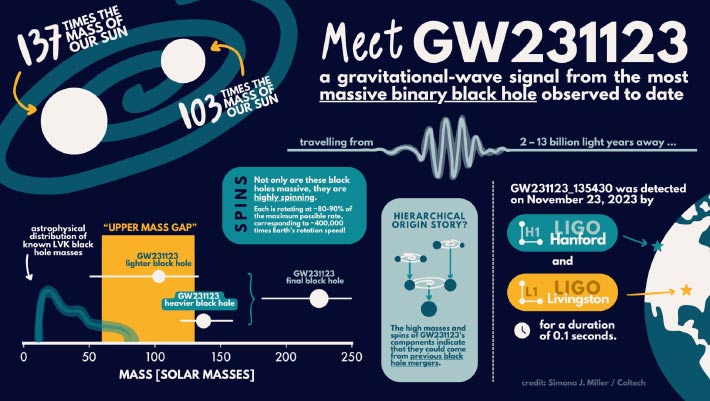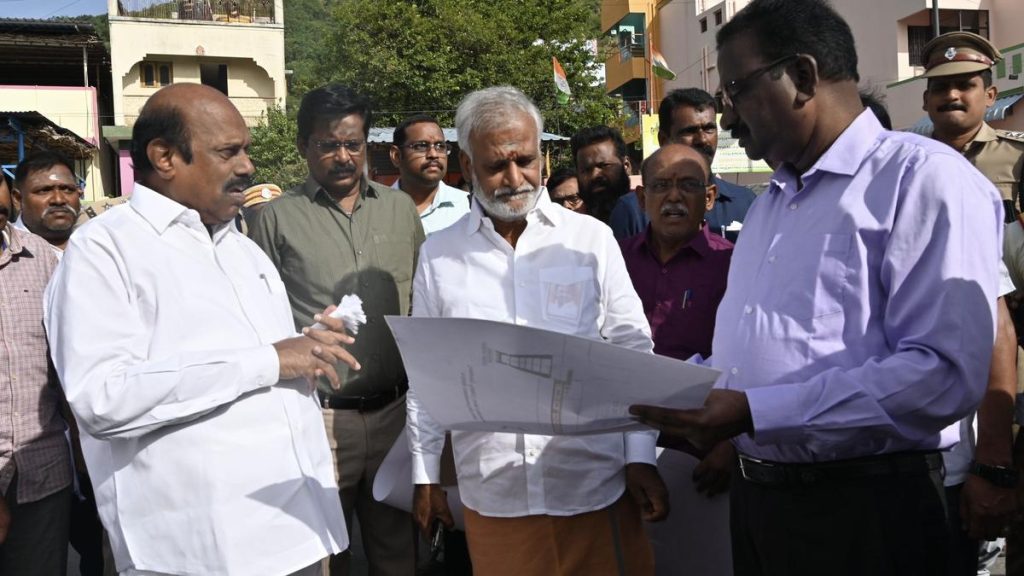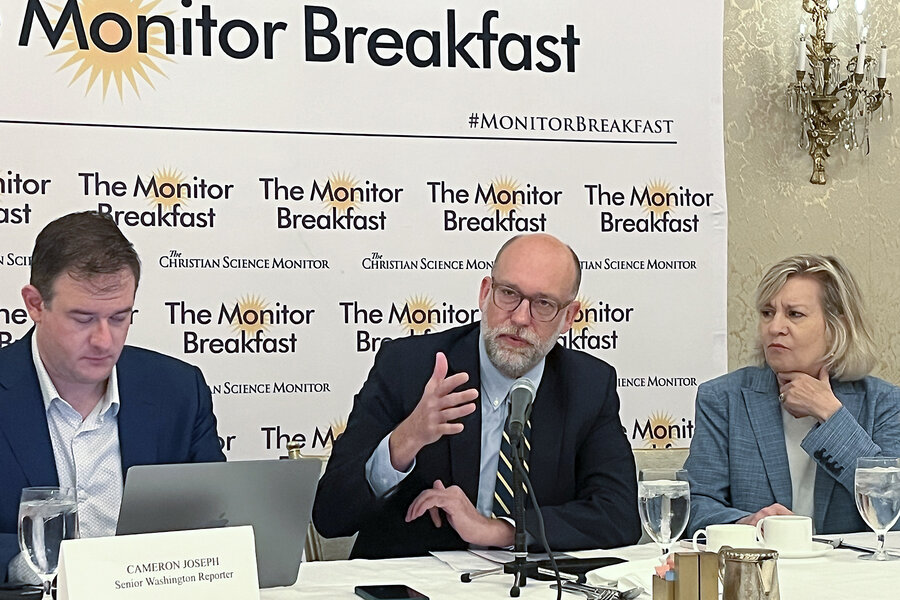Now Reading: Astrophysicists Detect Record-Breaking Black Hole Merger Through Gravitational Waves
-
01
Astrophysicists Detect Record-Breaking Black Hole Merger Through Gravitational Waves
Astrophysicists Detect Record-Breaking Black Hole Merger Through Gravitational Waves

Quick Summary
- Astrophysicists from the LIGO-Virgo-KAGRA (LVK) Collaboration detected the most massive black hole merger to date, designated GW231123, on November 23, 2023.
- The merged black hole has a final mass of over 225 times that of the Sun.
- Predecessor mergers include GW190521 (2021), which resulted in a 140-solar-mass black hole.
- The merging components in GW231123 weighed approximately 100 and 140 solar masses, respectively, placing them in the intermediate-mass category – lighter than supermassive but heavier than stellar-collapse black holes.
- Observations revealed rapid spinning among both merging black holes.
- Scientists speculate these massive binary black holes may have formed through earlier mergers rather than standard stellar evolution models, which don’t typically allow such heavy masses to form naturally.
- More broadly, LIGO collaborates with Virgo (Italy) and KAGRA (Japan); they have collectively observed more than 200 mergers during their latest operational run and about 300 total as 2015.
- Gravitational waves from this event continue to challenge existing theories on how massive objects like these form.
!An infographic detailing the GW231123 black hole merger. Image credit: Simona J. Miller / Caltech
Indian Opinion Analysis
The detection of an event as significant as GW231123 highlights advancements in astrophysical research and serves as a testament to global collaborative efforts like LVK’s partnership across nations – including india’s growing role within gravitational wave research frameworks.
India’s burgeoning participation in projects such as INDIGO (indian Initiative in Gravitational-wave Observations) could benefit from breakthroughs like this by enabling deeper exploration into cosmic phenomena that challenge conventional scientific models of formation processes. International discoveries underpin india’s need for robust infrastructure like its upcoming Laser Interferometer Observatory for gravitational waves.
Such findings have broader implications for education, inspiring future generations and accentuating India’s contribution toward high-impact science while fostering international cooperation between institutions worldwide-an increasingly vital factor amid aspiring pursuit of space exploration globally.




























